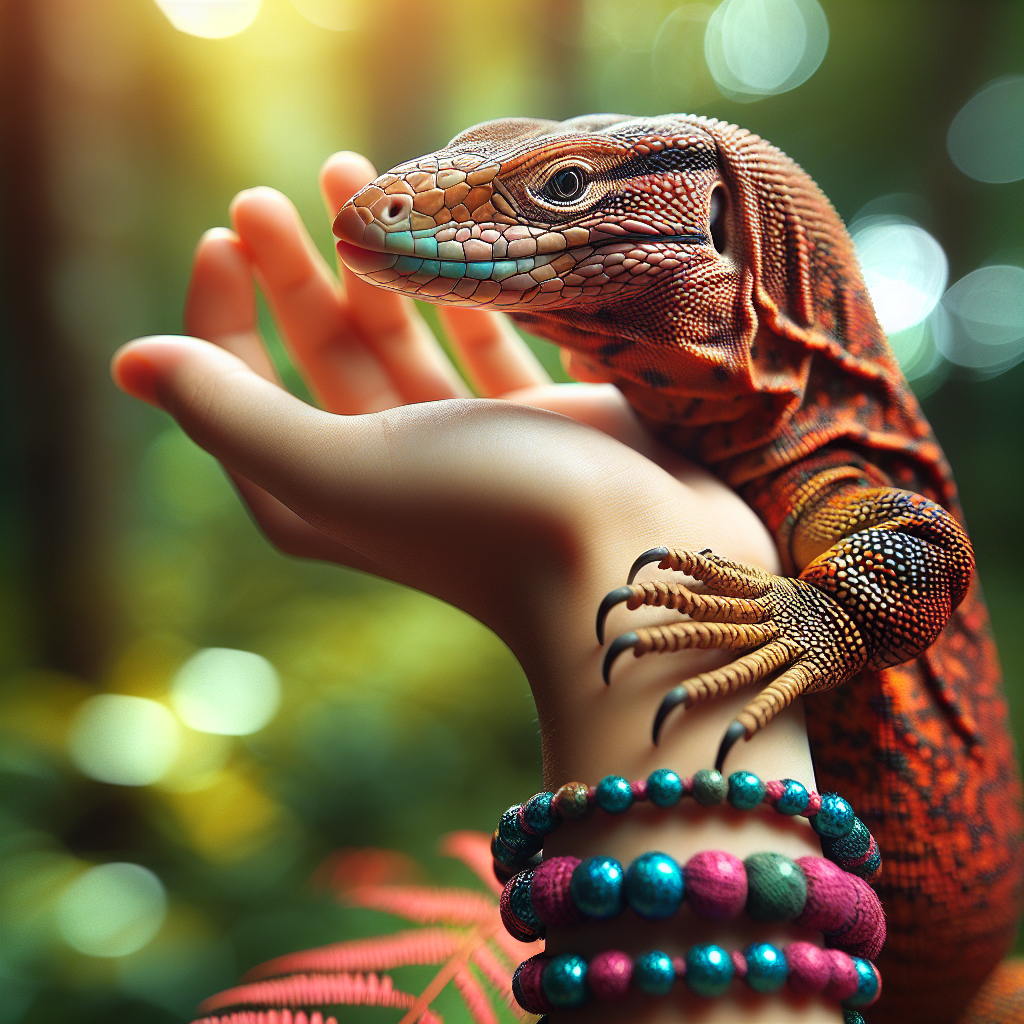The Benefits of Adopting Lizards as Outreach Animals
I’ve always been fascinated by the idea of adopting lizards as outreach animals. Did you know that lizards can actually make fantastic ambassadors for educational programs and community events? It’s true! These unique creatures have so much to offer in terms of engaging and educating people about the wonderful world of reptiles.
When it comes to selecting the right lizard species for outreach programs, there are a few key things to consider. Not all lizards are well-suited for public appearances, so it’s essential to choose a species that is docile, adaptable, and comfortable in a variety of environments. Some popular choices for outreach programs include bearded dragons, leopard geckos, and blue-tongued skinks, known for their gentle temperament and ease of handling.
Understanding the care and welfare needs of outreach lizards is crucial to their well-being and success in public settings. Providing proper nutrition, habitat enrichment, and regular veterinary care are essential aspects of responsible lizard ownership. Additionally, creating a stress-free environment and ensuring adequate socialization can help lizards feel comfortable and confident during outreach events.
One practical tip for creating engaging educational programs with lizards is to incorporate interactive elements that allow participants to interact with the animals firsthand. Hands-on experiences like guided handling sessions, feeding demonstrations, and educational presentations can help foster a deeper appreciation and understanding of lizards among audiences of all ages.
By adopting lizards as outreach animals, we not only have the opportunity to educate and inspire others about these fascinating creatures but also to promote conservation and responsible pet ownership. The impact of these outreach efforts extends far beyond the immediate audience, influencing attitudes and behaviors towards reptiles and wildlife conservation on a larger scale.
Selecting the Right Lizard Species for Outreach Programs
When it comes to selecting the right lizard species for outreach programs, it’s like finding the perfect match for a blind date – you want compatibility and chemistry! Just like how you wouldn’t take a vegetarian to a steakhouse, you need to consider the unique needs and characteristics of different lizard species when choosing one for your outreach initiatives.
Let me tell you a quick story about my friend who once decided to bring a bearded dragon to a school event as an outreach animal. The kids were fascinated by its docile nature and unique appearance, making it an instant hit. However, the next time around, he brought a chameleon, thinking it would have a similar effect. Little did he know that chameleons are more shy and sensitive creatures, and the loud environment stressed it out. It taught him a valuable lesson about the importance of researching and understanding the specific needs of each lizard species before incorporating them into outreach programs.
Choosing the right lizard species is crucial for the success of your outreach efforts. Each species has its own requirements in terms of habitat, diet, handling, and interaction, so it’s essential to match the lizard’s characteristics with the goals of your program. Whether you opt for a sociable leopard gecko, a colorful anole, or a majestic monitor lizard, consider factors like size, temperament, and adaptability to different environments.
Remember, the goal of using lizards as outreach animals is to engage and educate your audience while ensuring the well-being of the animals. By selecting the right lizard species that aligns with your program’s objectives and capabilities, you can create meaningful interactions that leave a lasting impact on both the audience and the lizards themselves. So, next time you’re choosing a lizard for your outreach program, think of it as matchmaking – finding the perfect partner in education and conservation!
Understanding the Care and Welfare Needs of Outreach Lizards
Have you ever thought about the care and welfare needs of outreach lizards? It’s crucial to ensure these unique animals are thriving in their roles as educational ambassadors. Imagine a scenario where you’re planning an outreach event featuring lizards as part of an educational program. The success of the event not only hinges on the engaging content but also on the well-being of the lizards involved.
When it comes to caring for outreach lizards, there are several key considerations to keep in mind. From providing a suitable habitat that mimics their natural environment to ensuring they have access to proper nutrition and hydration, every aspect of their care plays a vital role in their overall health and well-being. It’s like being a guardian for these fascinating creatures, responsible for their comfort and safety while they fulfill their outreach duties.
One interesting fact about the care of outreach lizards is that each species may have specific requirements based on their natural habitat and behavior. For instance, desert-dwelling lizards may need a warm, dry environment with access to basking spots, while tropical species might require higher humidity levels and a diverse diet. Understanding these unique needs is essential for creating a nurturing environment that supports the lizards’ physical and emotional well-being.
As you delve into the world of caring for outreach lizards, consider the broader implications of your role in their lives. By providing them with proper care and attention, you are not only ensuring their individual welfare but also contributing to the success of your outreach programs. These lizards serve as ambassadors for their species, helping to educate and inspire others about the importance of conservation and animal welfare.
So, the next time you interact with an outreach lizard, remember the significance of your role in their care and well-being. Your dedication to providing a nurturing environment for these unique animals will not only enhance their quality of life but also amplify the impact of your outreach efforts.
Tips for Creating Engaging Educational Programs with Lizards
Imagine we’re diving into the exciting world of creating engaging educational programs with lizards. So, have you ever thought about how to captivate your audience with these unique creatures? Picture this: you’re setting up an outreach event, and you want to ensure that your educational program with lizards leaves a lasting impact on your audience.
Let’s explore some tips on how to make your educational programs with lizards not only informative but also engaging. One practical tip is to incorporate interactive elements into your presentations. Consider including hands-on activities where participants can observe and interact with the lizards up close. This not only enhances learning but also creates a memorable experience for your audience.
Additionally, think about how you can tailor the content of your educational programs to suit your audience’s interests and knowledge levels. Whether you’re engaging with children, students, or adults, adjusting the presentation style and information delivery can make a significant difference in capturing their attention and fostering learning.
Another key aspect to consider is storytelling. Share interesting facts and anecdotes about the lizards you’re showcasing to make the educational experience more relatable and engaging. Did you know that some lizard species have unique adaptations that help them survive in their environments? These fascinating tidbits can spark curiosity and inspire further exploration.
Lastly, don’t forget to incorporate visuals and multimedia elements into your presentations. Utilize photos, videos, and interactive displays to enhance the learning experience and create a dynamic environment for your audience. Visual aids can help clarify complex concepts and make the information more accessible and engaging.
By implementing these tips and strategies, you can create educational programs with lizards that are not only informative but also captivating and memorable. So, are you ready to take your outreach initiatives to the next level with the power of lizard education?
Finding Reputable Sources for Adopting Outreach Lizards
When it comes to finding reputable sources for adopting outreach lizards, it’s essential to do your research and ensure you’re connecting with trustworthy organizations. I remember when I was looking to adopt a lizard for our outreach program, I stumbled upon a local reptile rescue that specialized in rehabilitating and rehoming reptiles. Their dedication to the well-being of these animals was truly inspiring, and I knew they would be a great resource for finding our outreach ambassador.
One fascinating fact I discovered during my search was that some reptile sanctuaries partner with educational institutions to provide homes for lizards that have outgrown their original habitats. These partnerships not only benefit the lizards by giving them a safe and enriching environment but also offer students unique learning opportunities through hands-on experience with these fascinating creatures.
A practical tip when seeking reputable sources for adopting outreach lizards is to ask for recommendations from fellow educators, animal enthusiasts, or local wildlife organizations. Word of mouth can be a valuable tool in finding trustworthy sources that prioritize the well-being and ethical treatment of reptiles used in outreach programs. Additionally, conducting thorough background checks on potential adoption sources and visiting their facilities in person can give you a firsthand look at how they care for their animals.
Exploring the challenge of ensuring the welfare of outreach lizards in public settings brings up important considerations such as proper handling techniques, stress management, and creating safe and stimulating environments for the animals. It’s crucial to address these challenges proactively to ensure that the lizards remain healthy, happy, and well-adjusted in their role as outreach ambassadors. By staying informed and putting the well-being of the lizards first, we can create impactful and meaningful outreach programs that benefit both the animals and the communities they engage with.
Incorporating Lizards into Outreach Events and Initiatives
When it comes to incorporating lizards into outreach events and initiatives, it’s all about creating a memorable and educational experience for your audience. Let me tell you about a time when I attended a reptile-themed outreach event and was blown away by how engaging it was.
The organizers had set up various stations showcasing different lizard species, each with its own unique characteristics and behaviors. One of the most fascinating parts was when they allowed attendees to interact closely with the lizards under supervision. It was truly eye-opening to see how these creatures captured everyone’s attention and sparked curiosity.
Now, imagine if you could create a similar interactive experience in your outreach programs. By carefully planning and designing activities that allow people to observe, touch, and learn about lizards up close, you can make a lasting impression. Whether it’s a school presentation, community event, or outreach booth, the key is to make it fun, informative, and engaging for all ages.
One practical tip to keep in mind is to provide proper handling instructions and safety guidelines when incorporating lizards into your outreach initiatives. Educating participants on how to interact respectfully with these animals not only ensures their well-being but also promotes a positive learning environment.
So, here’s a thought-provoking question for you: How can you creatively integrate lizards into your outreach efforts to captivate and educate your audience effectively? By exploring innovative ways to showcase these fascinating creatures, you can elevate your outreach programs and leave a lasting impact on those you engage with.
Remember, incorporating lizards into your outreach initiatives is not just about showcasing an exotic animal – it’s about fostering a deeper connection with nature, sparking curiosity, and inspiring a sense of wonder in your audience. So, get creative, think outside the box, and watch how these scaly ambassadors can transform your outreach efforts for the better.
Ensuring the Well-being of Outreach Lizards in Public Settings
Imagine you’re at an event, and you see a group of lizards engaging with the audience, showcasing their unique personalities and captivating everyone around them. That’s the magic of incorporating lizards into outreach initiatives.
Ensuring the well-being of outreach lizards in public settings is crucial to their success as educational ambassadors. Picture this: you’re setting up for an outreach event, and you notice that the lizards seem slightly agitated by the noise and commotion around them. This is where understanding their behavior cues becomes essential. By observing their body language and reactions, you can adjust their environment to make them feel more comfortable and secure.
Creating a safe and stress-free space for outreach lizards involves considering factors like temperature, lighting, noise levels, and interactions with the public. It’s like being a lizard whisperer, tuning into their needs and preferences to provide them with the best possible experience. Remember, these lizards are not just props for your outreach efforts; they are living beings that deserve respect and care.
One practical tip to ensure the well-being of outreach lizards is to establish clear boundaries and guidelines for handling and interacting with them. Educating event attendees on proper etiquette when engaging with the lizards can help prevent any stress or harm to the animals. By fostering a culture of respect and mindfulness, you can create a positive and enriching experience for both the lizards and the audience.
So, next time you’re planning an outreach event with lizards, think about how you can create a supportive and nurturing environment for these fascinating creatures. By prioritizing their well-being and comfort, you can elevate the impact of your outreach efforts and leave a lasting impression on everyone involved.
Building Connections and Communication with Outreach Lizards
Have you ever tried to have a heart-to-heart chat with a lizard? Well, maybe not exactly a deep conversation, but building connections with outreach lizards is all about understanding their unique language – body language, that is! Yes, lizards have their ways of communicating without words, and it’s quite fascinating once you start observing.
When you’re working with outreach lizards, whether it’s in an educational setting or at an event, paying attention to their body language can tell you a lot about how they’re feeling. For example, if a lizard is feeling stressed or uncomfortable, they might puff up their body, change color, or even flick their tail in warning. On the other hand, if they’re relaxed and content, you might see them basking under a heat lamp or leisurely exploring their surroundings.
Understanding and interpreting these cues can help you ensure the well-being and comfort of your outreach lizards. It’s like having a secret code with your scaly ambassadors! By observing their behavior and responding accordingly, you can create a positive and enriching experience for both the lizards and the people interacting with them.
So, the next time you’re hanging out with your outreach lizards, take a moment to tune in to their non-verbal communication. It’s like having your very own reptilian whisperer skills! And who knows, maybe one day you’ll find yourself having a full-blown conversation with your lizard friend – in a language only the two of you understand.
Measuring the Impact and Effectiveness of Lizards in Outreach
Have you ever thought about the deeper impact that outreach lizards can have beyond just their appearances? It’s fascinating to consider how these unique creatures can serve as more than just educational tools. Imagine if they could communicate their experiences and insights to us—what tales would they share?
It’s almost like a secret world unfolding right before our eyes. As we build connections with these outreach lizards, we’re not just providing them with a platform; we’re also opening doors to understanding their perspectives on the world around them. What if they could tell us about their favorite moments during outreach events or how they feel when interacting with different audiences?
This idea might sound whimsical, but it brings to light the importance of empathy and mutual respect in our interactions with outreach animals. By considering the thoughts and feelings of these lizards, we deepen our appreciation for the role they play in educating and inspiring others. It’s a reminder that every being, no matter how small or scaly, has a story worth sharing.
So, the next time you engage with an outreach lizard, take a moment to reflect on the richness of their experiences. What if they could talk—what would they say? How can we continue to enhance their well-being and happiness as they fulfill their roles as ambassadors in our communities? Let’s embrace the wonder and magic that these creatures bring to our outreach efforts, and let their silent presence speak volumes about the power of connection and understanding.
Enhancing Outreach Efforts Through Lizard Adoption
Have you ever considered the impact of adopting lizards as outreach animals? It’s truly fascinating to see how these unique creatures can help connect people with the natural world. Imagine bringing a lizard to a school or community event and watching as children’s eyes light up with curiosity and wonder.
One interesting fact about using lizards for outreach is that they come in a wide variety of species, each with its own characteristics and behaviors. From colorful geckos to majestic bearded dragons, there’s a lizard for every preference and purpose. Selecting the right species for your outreach program is crucial to ensuring a positive and engaging experience for both the audience and the lizard.
When incorporating lizards into educational programs or events, it’s essential to consider their care and welfare needs. These outreach animals require specific environmental conditions, diet, and handling practices to thrive in a public setting. By understanding and addressing these needs, you can create a safe and enriching experience for everyone involved.
Finding reputable sources for adopting outreach lizards is another important aspect to consider. Whether you choose to adopt from a rescue organization, breeder, or reputable pet store, make sure to research and verify the source to ensure the health and well-being of the lizard you bring into your outreach program.
As you embark on this journey of adopting lizards as outreach animals, think about the connections you can build and the impact you can make on your community. By engaging with these fascinating creatures, you have the opportunity to inspire curiosity, empathy, and a deeper appreciation for the natural world. So, are you ready to explore the world of outreach lizards and make a difference in your community?




